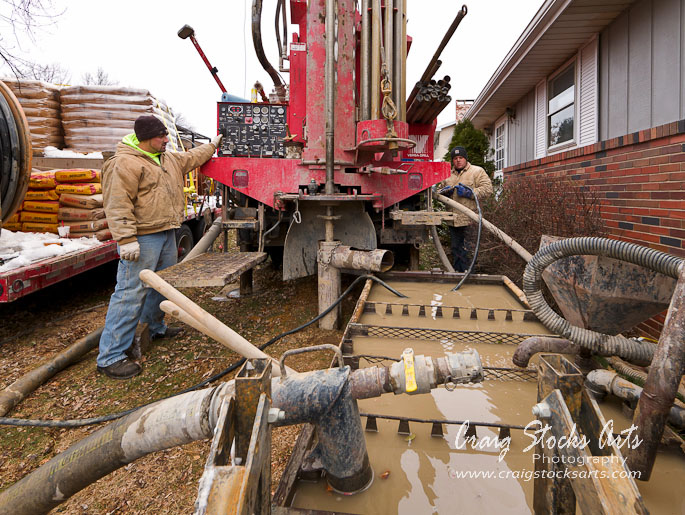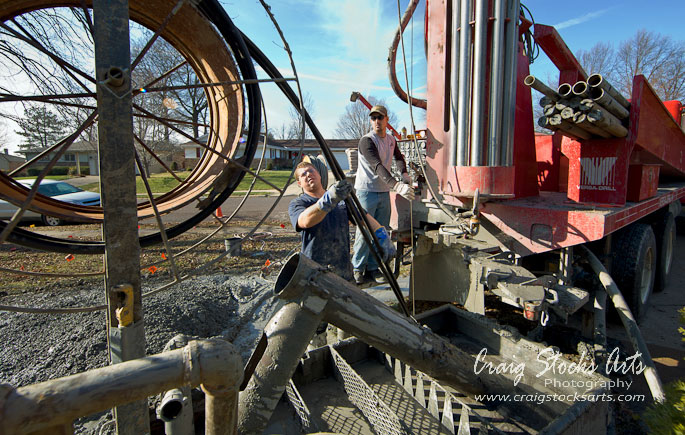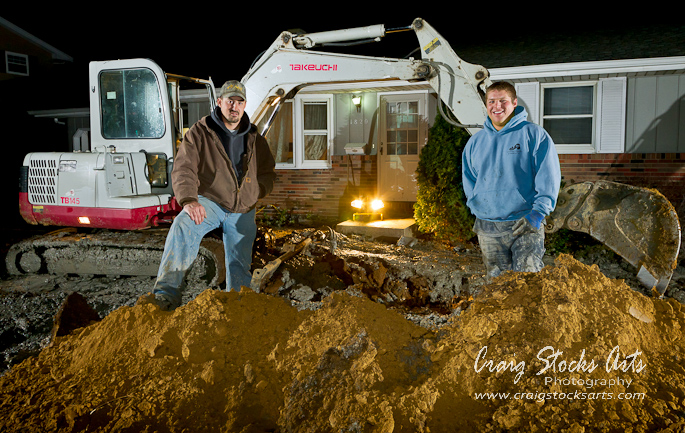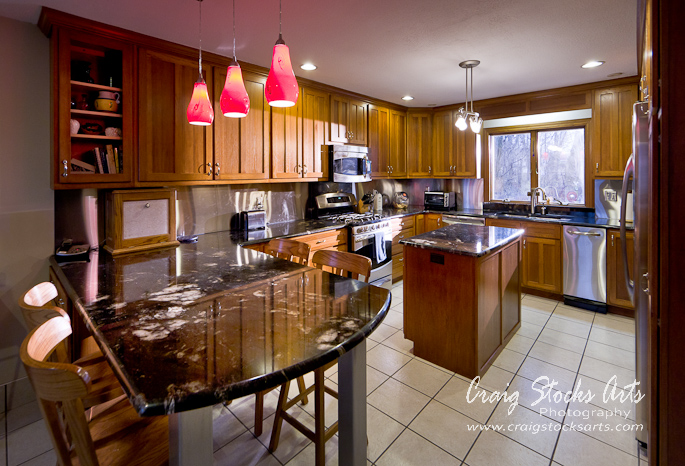My son, Chris, just bought a house. Like most people, there were a few things he wanted to do to “fix it up” before moving in. The bad news – the furnace and air conditioner in his new house were well past their prime and both needed to be replaced. The good news – he installs geothermal heating and cooling systems for a living. His part of the process is drilling the “well” where he then installs the loop of pipe that transfers the heat between the house heating system and the ground.
As a father, this gave me an opportunity to see my son doing his job. As an engineer, it was interesting to see how the process all comes together. And, as a photographer, it was a great opportunity to document the process. The photo below shows Chris (on the right) and his assistant Norman as they’re just about ready to start drilling the first of three holes. Their plan was to drill three holes, each 300 feet deep.

The second step in the process is to install the loop of pipe that actually does the energy transfer. The trick to getting a loop of 300 feet of plastic pipe into the hole is to attach a heavy pipe to the loop so that gravity pulls it down. As they slowly lower the weighted pipe, the loop simply follows it into the hole. Then, they use the cable hoist on the drilling rig to pull the weighted pipe back up.

The last step is to connect the three ground loops and run the pipe into the house. They were trying to beat an approaching winter storm, so they worked into the evening to finish up. As you can see, the process makes a bit of a mess in the yard while they’re working, but most of the drill tailing will get buried with the pipe. After a little grading and some grass seed, the yard will look as good as new.



 Our grandsons spent the night with us the other day, and Caden, the eight year old, wanted to build a project in the shop. There’s nothing unusual about that, he always wants to build something. But, in this case, he wanted to make a birthday present for his mom. What I think is unusual for an eight year old is that he knew exactly what he wanted to make, and had a pretty good idea how to make it.
Our grandsons spent the night with us the other day, and Caden, the eight year old, wanted to build a project in the shop. There’s nothing unusual about that, he always wants to build something. But, in this case, he wanted to make a birthday present for his mom. What I think is unusual for an eight year old is that he knew exactly what he wanted to make, and had a pretty good idea how to make it.
